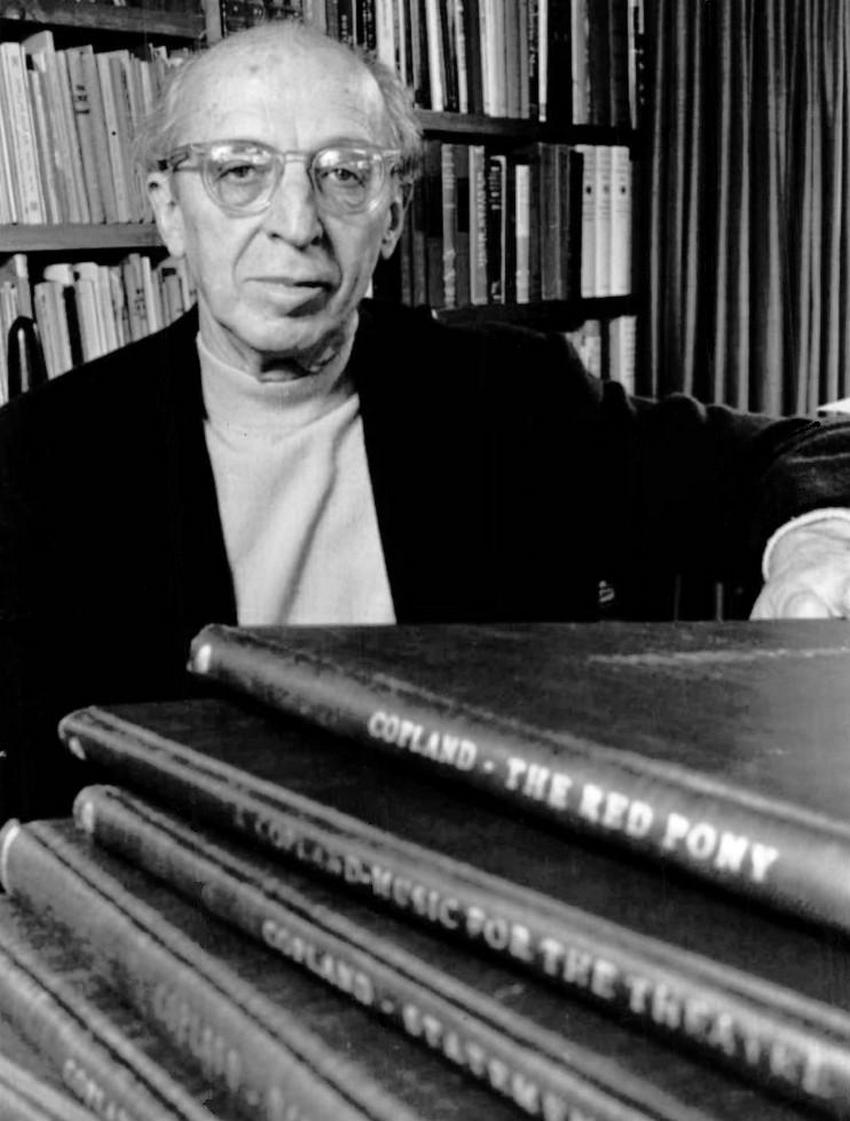
As a music student, I often used visit the 100 Club in London’s Oxford Street. It was a smoky, seedy sort of place in an enormous dark cellar but the top jazz bands of the day played there. I adored the music, especially the bright, brash sounds of Dixieland. Of course I didn’t tell my college professors, who would surely have disapproved of such undesirable places.
So I could sympathise with the young Darius Milhaud when he heard jazz for the first time. It excited him so much that in 1922 he set off from France to America and visited clubs and bars in New York’s Harlem, which were probably even seedier than the place in Oxford Street. He was twenty-four at the time and jazz had a tremendous effect on him.
As a result of this adventure, he was the first European composer to incorporate jazz idioms in his own music. The first jazz-inspired work dates from 1923 and it’s called La Création du Monde. In 1940 Milhaud finally emigrated to the United States and taught composition at Mills College in California. Two of his most well-known students were Dave Brubeck and Burt Bacharach.
The Austrian composer Ernst Krenek was two years younger than Milhaud and wrote the first jazz-inspired opera Jonny Spielt Auf (“Jonny Strikes Up”) about a jazz violinist, whose name – not surprisingly – was Jonny. First performed in 1927, it was a huge success, with hundreds of performances in the following years.
Although they didn’t realise at the time, George Gershwin and Darius Milhaud were born in the same year – 1898. At the age of twenty-six Gershwin composed his first major work, Rhapsody in Blue. It was on a train journey to Boston that most of the ideas for the piece drifted into his mind.
In the decades that followed, other composers used jazz idioms in their music notably Malcolm Arnold, Constant Lambert, Boris Blacher, Arthur Honegger and Kurt Weill. But perhaps the most well-known American composers who drew ideas from jazz were Leonard Bernstein and Aaron Copland.
Aaron Copland (1900-1990): Concerto for Clarinet and String Orchestra. Martin Fröst (clt); Norwegian Chamber Orchestra (Duration 15:35; Video 720p HD)
This concerto was commissioned by the so-called “King of Swing” Benny Goodman, who evidently paid two thousand dollars for it, but despite the hefty price-tag the work is unusually short. It has just two movements, linked by an unaccompanied cadenza. The cadenza is musically significant, because it introduces melodies that are yet to come.
The first movement is about as far from jazz as you could get. It takes us to that quiet, expansive landscape of wide open prairies and sleepy villages which Copland was so good at evoking in his music. It’s lyrical and melancholy and perhaps one of the loveliest pieces that he wrote. It leads directly into the cadenza (06:08) which introduces some of the melodies that dominate the second movement. It sounds as though it’s being improvised, but it isn’t.
In the second movement, (07:57) the jazz influence comes through persuasively. But what a performance! Martin Fröst is a brilliant clarinet player with incredible control and the firmness of the ensemble playing is stunningly good, especially at 09:09 onwards. It’s a pity that the clarinetist has such a penchant for swaying around like a snake charmer.
This wonderful concerto was written between 1929 and 1931. The first movement opens somewhat unusually with the sound of a whip-crack, created by slapping two pieces of wood together. The movement is a colourful blend of Basque and Spanish musical ideas super-charged with jazz idioms, brilliantly performed with fine precision. The slow movement (08:37) leaves jazz far behind and takes us into a reverie – an elegant, soul-searching melody with a gentle waltz-like accompaniment. The third movement (17:24) returns to a more frenetic world, permeated by the distinct sounds of jazz.
Pianist Jean-Yves Thibaudet gives a brilliant performance of this technically difficult work. He entered the Lyons Conservatory at the age of five and made his first public appearance at the age of seven. He is one of the world’s top pianists and has made over forty recordings. Unusually for a classical pianist, he is also a competent jazz player.
The Gustav Mahler Jugendorchester is also in excellent form and you’ll hear some sparkling playing. If you have the time, try to listen to the entire concerto. It will be half an hour very well spent.
Strangely enough, the spiky opening theme of the concerto came to Ravel on a train journey between Oxford and London.
First Published in Pattaya Mail on October 16, 2014
 |
 |
 |





